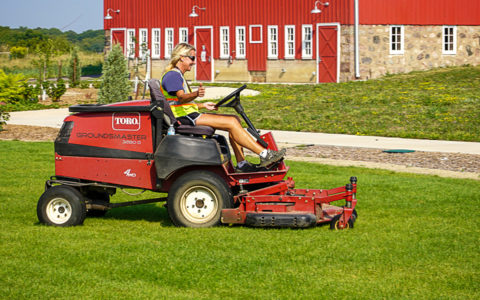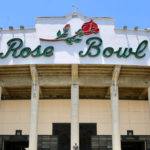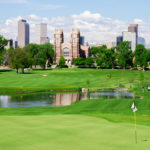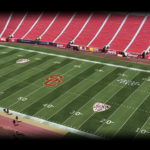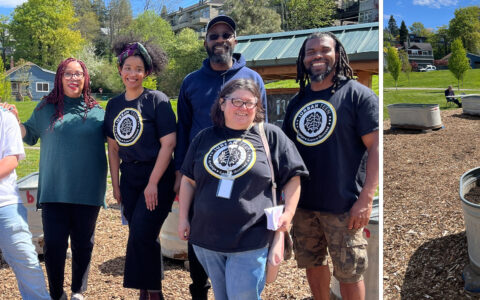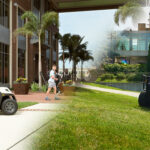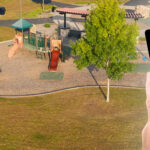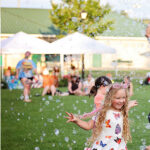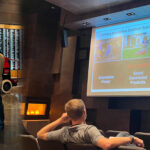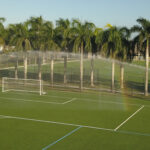This article is part of a series featuring premier facilities across North America that partner with Toro for equipment and support.
Perched on a hilltop overlooking Los Angeles, the Hollywood sign is one of the most recognizable landmarks of LA — and it’s also a part of the City of LA’s Department of Parks and Recreation. From the valley to the sea, the LA Parks and Rec Department has a hand in maintaining the city’s vast “backyard” of 16,000 parkland acres and 444 park sites, including the iconic Hollywood Sign.
For this Iconic Grounds profile, we asked LA Parks public information director Rose Watson to explain the comprehensive park system that helps Los Angeles residents enjoy the outdoors, and much, much more.
More than just a park
When you serve more than four million people, your parks and rec department is going to look a little different. “For LA, the parks are our backyard. So, we created a platform for people to come in, and just enjoy outdoor recreation and enrichment — whether that’s simply walking your dog, or participating in activities such as youth programs, we have so much to offer,” says Watson.
By the numbers, the department maintains and operates hundreds of athletic fields, 422 playgrounds, 321 tennis courts, 184 recreation centers, 72 fitness areas, 62 swimming pools and aquatic centers, 30 senior centers, 26 skate parks, 13 golf courses, 12 museums, 9 dog parks, 187 summer youth camps and supports the Summer Night Lights gang reduction and community intervention program.
For many, the parks are an integral part of their lives. “We see youth who learned to swim in our aquatics programs eventually become lifeguards for our pools and sometimes even go on to work as recreation program staff as adults,” says Watson. “We serve as an outdoor resource to our community, but also as a learning resource and even an employment resource.”

Turning an issue into a solution
Issues such as homelessness and gang-related activities can occur in the parks, much like in any large city, but instead of fighting those challenges, the department decided to engage with them. “The one thing we know about our parks is that if they stay active, it eliminates a lot of the unwanted activities,” says Watson.
So, they collaborated with the City of LA’s Mayor’s Office of Public Safety, Gang Reduction & Youth Development to implement after dark programs that promote nonviolence, workforce development and healthy habits. The programs expand the offerings of each park site and offer free sports leagues, arts and recreational activities, health screenings, workshops and more to connect people with the parks and their community.
In response to concerns around homelessness, the department started a hybrid program to hire members of the homeless community to work in the parks performing maintenance activities and helping keep up the grounds. “Our goal is to help train people who use our parks or may be at risk populations become good stewards of their community,” says Watson. “Because really, it’s not the city’s park, it’s the people’s park.”
Park rangers play an important role
“A lot of people don’t know that we still have park rangers,” says Watson. “They are the eyes and ears of our park system and they oversee everything that happens there.” The rangers participate in a rigorous training that’s similar to the Los Angeles Police Department training — the only difference is rangers don’t carry weapons. The rangers not only watch over the parks, but they also help educate community members on the park system and conduct educational programs and tours for youth.

Home of the 2028 Summer Olympics
Recently chosen to host the 2028 Summer Olympics, you may think the parks department is scrambling to build new infrastructure. Think again. “LA was a perfect choice to host because we have such a unique and vast established park system,” says Watson. “Unlike other cities who may need to develop whole new stadiums or sports fields to host, we already have the locations and facilities.” The department is focused on making crucial upgrades and enhancements to facilitate the Olympic games in 2028 but isn’t facing any major construction.
It’s also taking advantage of the Olympic opportunity to create more youth sports programs and promote athletics. “The program provides access to sports and skill development for children who may not have the financial resources to participate otherwise,” says Watson. “We’re rolling it out this year and encouraging all our youth to get involved. You never know, maybe one of them will have the opportunity to play in the 2028 Olympics right here in their city!”
Lessons Learned in 2020
Like all cities, the COVID-19 pandemic affected LA deeply, and the parks department quickly adapted its programming. “The lesson learned is to make sure we have additional programs so that if we ever have to close our parks again, we have a system in place so we can just roll right into it,” says Watson. “I do think the pandemic brought the community together as a whole, and we’d like to continue to leverage that by communicating better and having more boots on the ground to help check-in on our community members. Ultimately, we’re learning to be a better service to people in need across the city.”
In the past year, the department went virtual with its programming and found new ways to serve the city. “We had all these open facilities and knew there were kids who had been given laptops for school but didn’t have access to the internet. So, we opened up the facilities and offered alternative learning programs with free internet so kids wouldn’t miss out on their education,” says Watson. “It really showed us how valuable we are to our community outside of simply providing access to recreation.”

Open year-round and open to all
In a city where the sun is (almost) always shining, you can visit a park 365 days a year. “From sunup to sundown, you can enjoy an LA park,” says Watson. “LA is a great example of a city that offers unique opportunities year-round for people to come in and enjoy life in the city’s ‘backyard.’ We’re really blessed with that.”
To help maintain the high standard the parks department holds all of its green spaces to, it relies on Toro equipment. “Part of our mission is to have safe and well-maintained parks and having the Toro equipment on hand has been a huge benefit to help us keep our parks vibrant and accessible,” says Watson. “Without the Toro equipment, we simply couldn’t do that.”
Maintaining such a robust park system and ensuring every person in LA has equal access to well-groomed and safe parks takes a lot of hands. Thousands of volunteers, community members and Parks and Rec staff show up every day to ensure the City of LA’s unique parks and iconic sites are clean, safe and accessible.
When asked which iconic site she’d recommend visiting if you could only visit one, Watson admitted she could never pick just one, but added “start with Griffith Observatory and it’s amazing landscape and city views — then go from there.”

Watch for more Iconic Grounds profiles.
Curious where our next Iconic Grounds article
will take us? Follow @ToroGrounds on Twitter for updates and look for the next issue of
Grounds For Success.
